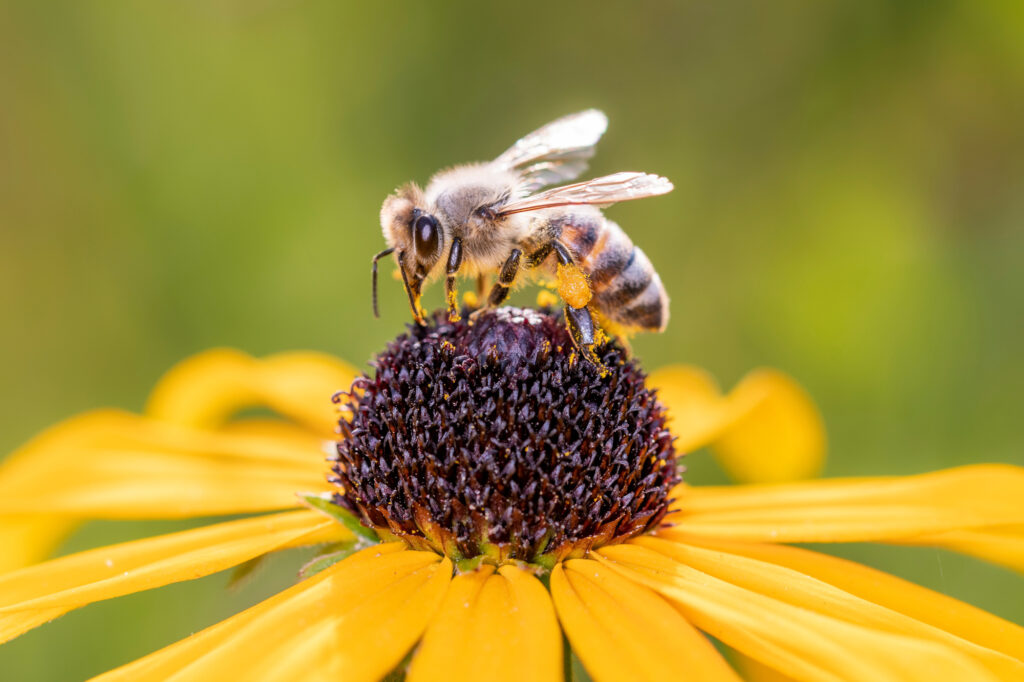by: Kaelyn Lacefield
Bee stings, while often just a temporary discomfort for most, can pose serious risks for those with allergies. Understanding the causes, symptoms, and treatments for bee sting allergies is crucial, especially as we head into the summer months when bee activity peaks.

As we enter the warmth of spring and the forthcoming summer, the great outdoors beckons with its vibrant colors and lively sounds. Bees play a pivotal role in the buzzing life of gardens and meadows, flitting from flower to flower in a pollination dance. Yet, for some, the sight of a bee brings not just curiosity but a tinge of apprehension due to bee allergies. Let’s delve into the world of bee sting allergies, understanding the causes and symptoms and how to navigate these challenges, especially as bee activity peaks during summer.
The Buzz on Bee Allergies:
Bee allergies, though not as common as seasonal allergies, can bring worry and stress for those affected. When a bee delivers its sting, it injects venom laced with proteins that can trigger an immune system response in susceptible individuals. While many may only experience minor discomfort, like redness and swelling at the sting site, others may face far more severe reactions, even risking anaphylaxis—a potentially life-threatening allergic reaction.
Understanding the Causes:
What leads to bee allergies in the first place? Well, genetics certainly have a say in the matter. If allergies run in your family, you’re more likely to be sticky after a bee sting. Repeated encounters with bee venom can sensitize your immune system, priming it to go into overdrive upon future stings. Sensitization, as it’s called, is when your immune system becomes supercharged in its response to a specific allergen, like bee venom, after initial exposure, making subsequent encounters riskier.
Spotting the Signs:
Recognizing the symptoms of a bee allergy is crucial for staying safe. While some reactions may be mild—think localized redness, swelling, and itching—others can be downright frightening, with difficulty breathing, throat or tongue swelling, dizziness, and even loss of consciousness. If you or someone you know experiences severe symptoms or shows signs of anaphylaxis, it’s a red alert to seek immediate medical attention.
Managing Reactions:
So, what can you do if you’re facing a bee allergy? Prevention and preparation are key. Individuals diagnosed with bee allergies should arm themselves with epinephrine auto-injectors, such as EpiPens, and stay educated on allergen avoidance and emergency response. If it stings, attempt to remove the stinger quickly, apply cold compresses, and take antihistamines or Benadryl to help take the sting out of milder reactions. Those who are prone to more extreme symptoms should be taken to the emergency room immediately.
Staying Safe in Nature:
Despite the risks, bee allergies shouldn’t keep you cooped up indoors. With caution, you can savor nature’s wonders without worrying about bee stings. Dressing smartly with protective clothing, steering clear of heavily scented products, and keeping an eye out for buzzing buddies can all minimize the chances of a bee encounter.
As we venture into the great outdoors, let’s greet bees with respect and appreciation for their vital role in our ecosystem. With a keen understanding of bee allergies, a readiness to respond, and a sprinkle of caution, we can ensure that every encounter with these industrious insects is a moment of wonder and connection with nature.